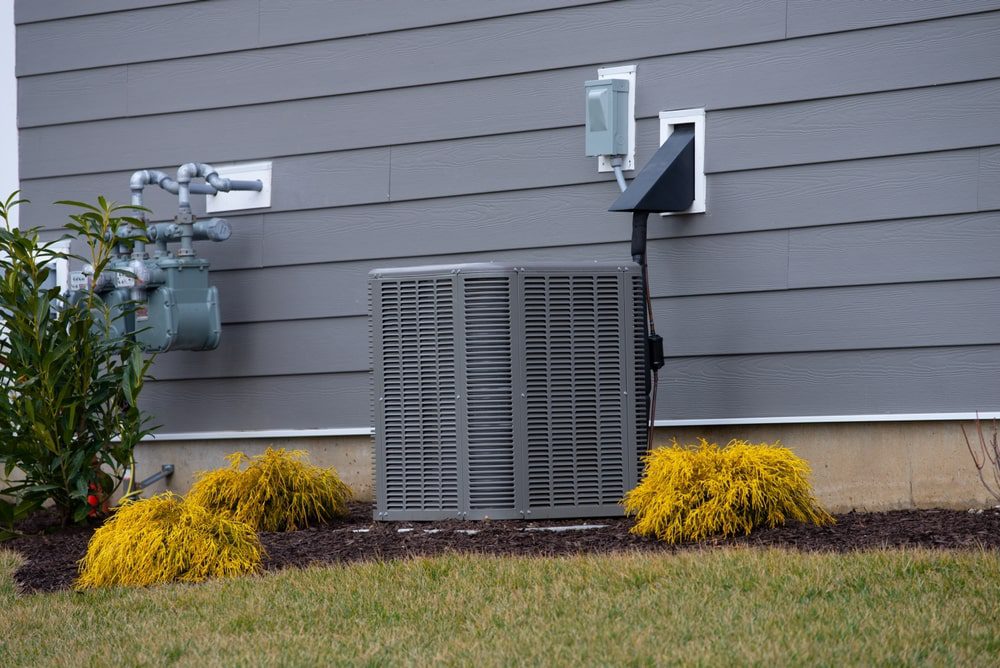
Air conditioners come in all different shapes, sizes, and types. Choosing one can make the difference between having a nice, cool home and one that never gets as cool as you want. Making this determination requires knowing the answer to the question, “What size AC unit do I need?” In this article, we will walk you through this decision-making process and explain what determining factors go into selecting the right air conditioner size.
Why Sizing Your AC Unit Matters?
Many people don’t consider size when it comes to an AC unit. They think an AC unit is an AC unit, and there can’t be too much of a difference between sizes.
However, this isn’t right. An AC unit is built with a certain level of power, giving it a certain capability. So, a smaller unit will be unable to provide enough cooling power to maintain the climate in a large home. Meanwhile, using a massive AC unit on a small home is overkill and causes the unit to cycle more frequently, leading to an increase in repairs.
Think of it like heating your home with a fire. You wouldn’t expect a little candle to heat anything at all. However, a roaring fireplace will provide a whole room with optimal warmth. While this example is a better way of explaining what size furnace you need, it still applies to the impact size has on an air conditioner’s function.
What Are BTUs?
When dealing with air conditioning, you will often hear the term BTUs thrown around. This is because BTUs and BTUh are important terms when it comes to comparing air conditioners.
BTU is an acronym for British Thermal Unit. On a technical level, one BTU measures the energy needed to increase a pound of water by one degree Fahrenheit. Meanwhile, BTUh stands for British thermal units per hour.
While this all sounds technical, all you really need to know is that BTUs measure heat in a room, while BTUh measures heat per hour. This is important for air conditioners because they have to remove BTUs from a building. So, an air conditioner capable of removing more BTUs is a more powerful unit.
What Is AC Unit Tonnage?
Many smaller air conditioners are measured in the number of BTUs that they are capable of removing from a room. However, larger air conditioners need to remove so many BTUs that the numbers become unruly. In these cases, BTUs are used to calculate AC tonnage.
Tonnage is a large-scale way of expressing how many BTUs an air conditioner can remove from a room. A two-ton AC unit can cool 24,000 BTUs of air per hour. Meanwhile, a three-ton unit can extract 36,000 BTUs and so on.
So, the greater the tonnage of the AC unit, the more heat it can remove. A one-ton AC unit may be able to handle some smaller jobs, but a two or three-ton unit may be required when the size of the area that needs to be cooled is larger.
Square Footage
While BTUs and tonnage highlight the differences between air conditioners, they are far from the only factors that play into the size of the AC unit needed. Square footage has a significant role as well.
This is because larger areas require more power to change the climate. A massive room with a tiny AC unit running in it will take forever to cool.
On average, around 20 BTUs of cooling power are required for each square foot of the desired cooling area. So, if you are cooling a room that is 250 square feet, you will need an AC unit capable of removing about 5,000 BTUs.
However, this is not an exact science because rooms can have the same square footage but require different air conditioners. Some rooms have incredibly high ceilings and, thus, are larger than rooms with the same square footage but with lower ceilings. Some rooms also have factors that make them warmer or cooler than average. So, it is important to consider all of the factors when making a decision.

What Size Air Conditioner Do I Need?
With all this information in mind, you can start to determine how large of an air conditioner you need for your space. When doing so, your decision breaks down into two categories: air conditioners for a room and air conditioners for an entire house.
1. AC Unit Size for a Room
Rooms are typically the smallest areas in a home that need air conditioning. This means they usually only need a relatively small, single unit to properly cool.
Most rooms will require an air conditioner capable of removing anywhere between 4,000 BTUs to 8,500 BTUs. On the lower end of this spectrum are small bedrooms, guest bedrooms, or other relatively small areas. On the higher end are living rooms, master bedrooms, and any other large space within a home.
Knowing the square footage of the room will be required to find out exactly how large of an air conditioner is needed. Rooms measuring from around 200 to 300 square feet will be on the smaller end, while those measuring at or above 400 square feet will be on the larger end.
Besides square footage, other information is needed. This is because additional factors impact the climate of the room. For example, a room with large windows that receive direct sunlight will heat up more due to the sun’s rays. Similarly, a kitchen will heat up significantly during mealtimes, as the stovetop and oven will raise the room’s temperature. In these cases and more, larger and more powerful air conditioners are needed.
2. AC Unit Size for a House
An entire home is bigger than a single room. That being said, a home will require a much larger and more powerful air conditioner. In almost all cases, the job will need to be handled by a professional AC installation company.
Most homes require an air conditioner that is at least 1.5 tons. Other homes may need more. There are even cases where getting an exact measurement is necessary, in which case the air conditioner’s power may be expressed in BTUs rather than tons.
In general, the formula for finding out how powerful an air conditioner a home needs starts with the square footage. This number should be multiplied by 20, divided by 12,000, and, finally, subtracted by the number one. This gives the total number of tons required.
The only difference is when the home is located in a particularly warm climate. In these cases, the number one shouldn’t be subtracted from the total.
So, a 3,000-square-foot home will require a four-ton air conditioner. The same home will require a five-ton air conditioner in a warmer climate.
Call Eanes for AC Installation in North Carolina

Finding out exactly what air conditioner size your home needs can be extremely difficult. There are a lot of factors and plenty of potential mistakes you can make.
Luckily, Eanes is here to help. If you schedule an installation with us, we’ll examine the property. Then, we’ll use our expertise to recommend what will work in your home. We’ll then complete the installation without worry.

